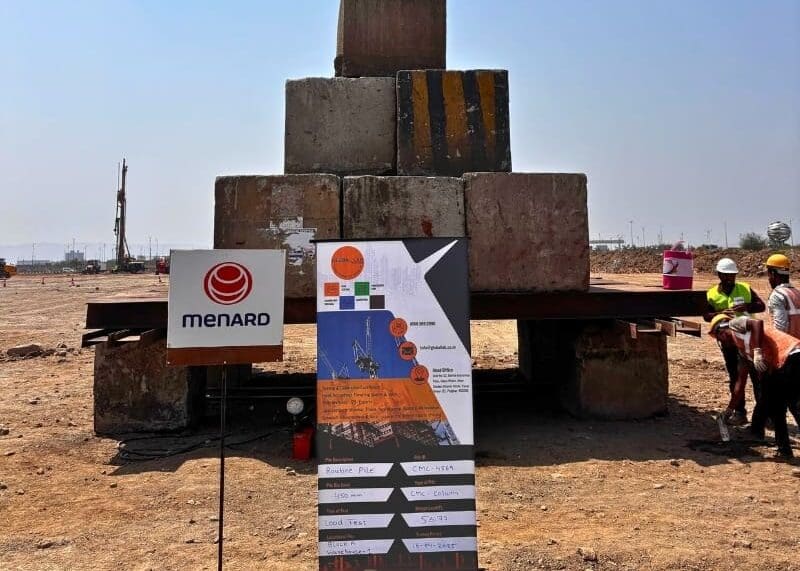When constructing large structures on soft or reclaimed soil, one of the biggest engineering challenges is ensuring the foundation remains stable over time. That’s where the Control Modulus Column Test (CMC Test) plays a vital role. At Global Lab, we recently conducted a CMC test at the JNPA Site in Navi Mumbai, and in this blog, we’re sharing why it matters, how it works, and what insights it offers for construction and civil engineering professionals.
What is a Control Modulus Column Test?
A Control Modulus Column Test is a specialized site test that evaluates the load-bearing capacity of reinforced soil — specifically, the soil that has been improved using modulus columns. These columns are vertical inclusions (often made of gravel or concrete) inserted into soft ground to improve its stiffness and reduce settlement.
Why is it important?
In areas with soft or loose soil, structures like port terminals, warehouses, or high-rise buildings can settle unevenly over time. CMC testing helps:
Measure how much load the treated ground can support
Understand how much settlement might occur under structural loads
Guide foundation design decisions before construction begins
A Real-World Example: JNPA Site, Navi Mumbai
At Global Lab, we recently had the opportunity to perform a Control Modulus Column Test at the JNPA (Jawaharlal Nehru Port Authority) site, one of the key infrastructure hubs in Navi Mumbai.
Here are the project highlights:
Test Type: Load Test on Control Modulus Column
Depth: 4.5 meters
Load Achieved: 56.71 tons
Client: Menard, an international ground improvement contractor
This test was essential to verify the ground’s improved stiffness and ensure that the infrastructure planned for the site could be safely supported.
What Did the Test Reveal?
Using calibrated equipment and field expertise, our team assessed the modulus column’s performance under gradually increasing load. The data collected helped confirm:
Consistent stiffness across the treated soil
Sufficient load-bearing capacity to support heavy port infrastructure
Minimal expected settlement, thanks to effective ground improvement
These insights allowed the site engineers to finalize foundation design parameters with greater confidence, reducing risk and optimizing construction time.
Why Use Control Modulus Columns in India?
In India, many critical infrastructure projects are built near coastal or low-lying areas — think ports, airports, and logistics parks. These zones often have weak soils that can’t bear heavy structural loads without improvement.
CMC techniques are popular because they:
Reduce differential settlement
Avoid the need for deep excavation
Are faster and cleaner compared to traditional pile foundations
Adding a CMC test ensures the method is working as expected before large-scale construction begins.
How Global Lab Supports CMC Testing
At Global Lab, we understand that testing is more than just numbers — it’s about ensuring safety, stability, and sustainability in the built environment.
Here’s what we bring to the table:
On-site testing capability: We bring our testing setup to your location
Trained geotechnical professionals: Our engineers interpret the results to guide your next steps
Reliable reports: We provide clear, actionable data that supports design decisions
Conclusion
The Control Modulus Column Test is a crucial step when building on soft ground. It validates the effectiveness of soil improvement methods and helps engineers ensure that the foundation will stand strong for decades to come.
Our work at the JNPA site in Navi Mumbai highlights how strategic testing can prevent future foundation issues and support safe infrastructure development.
If you’re planning a project on challenging soil and want to get the foundation right — from the ground up — our team at Global Lab is here to help.
Want to know more about our soil and foundation testing services?
📞 Call us at 1800 309 2996 or
🌐 Visit www.globallabindia.com to schedule a consultation.


